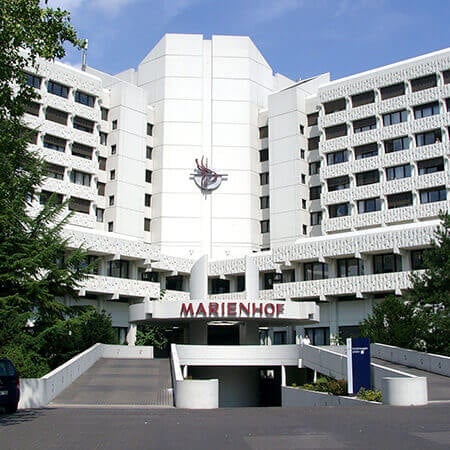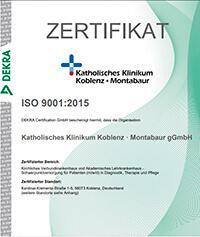Top Hospitals for Treatment of Hip osteoarthritis (coxarthrosis)
Each hospital in this list meets Booking Health’s strict international standards: at least 250 surgeries per year, ISO‑certified quality management, and documented survival outcomes. Our medical board then ranks the clinics by clinical expertise, technology, and patient‑satisfaction scores.

The DRK Hospital Berlin Westend is a modern medical facility with a rich historical heritage. It is an academic hospital of the Charite University Hospital Berlin, one of the most prestigious medical facilities in Europe and worldwide. The medical complex is part of the DRK Kliniken Berlin Group, which has a history spanning mor



Hip osteoarthritis diagnostics
Price from:
0.00
Go to the program Hip osteoarthritis (coxarthrosis) treatment with bilateral hip replacement (hip endoprosthesis)
Price from:
25474.92
Go to the program Hip osteoarthritis (coxarthrosis) treatment with hip replacement (hip endoprosthesis)
Price from:
18455.37
Go to the program Hip osteoarthritis (coxarthrosis) treatment with hip replacement (hip endoprosthesis)
Price from:
Go to the program
18552.74
13552.74 Bilateral hip replacement and rehabilitation
Price from:
33447.57
Go to the program Hip replacement and rehabilitation
Price from:
Go to the program
24113.83
19113.83 Hip endoprosthesis replacement
Price from:
Go to the program
24390.42
21390.42 Diagnosis and conservative treatment of hip osteoarthritis
Price from:
5027.6
Go to the program Hip arthroscopy in hip osteoarthritis
Price from:
8697.7
Go to the program Hip endoprosthesis replacement and rehabilitation
Price from:
Go to the program
28989.16
25489.16 
The Catholic Clinic Koblenz-Montabaur is a modern medical facility with an excellent reputation in Germany and abroad. The medical center is an academic clinic of the University Hospital Mainz, which gives patients the opportunity to take advantage of scientific advances and innovative treatments. The clinic has the widest possi



Hip osteoarthritis diagnostics
Price from:
0.00
Go to the program Hip osteoarthritis (coxarthrosis) treatment with hip replacement (hip endoprosthesis)
Price from:
20743.82
Go to the program Hip osteoarthritis (coxarthrosis) treatment with hip replacement (hip endoprosthesis)
Price from:
20870.14
Go to the program Hip replacement and rehabilitation
Price from:
27265.38
Go to the program Hip endoprosthesis replacement
Price from:
34330.8
Go to the program Diagnosis and conservative treatment of hip osteoarthritis
Price from:
5718.73
Go to the program Hip arthroscopy in hip osteoarthritis
Price from:
9960.94
Go to the program Hip endoprosthesis replacement and rehabilitation
Price from:
37180.92
Go to the program 
According to the Focus magazine, the Brothers of Mercy Hospital Munich ranks among the top German hospitals in the Federal State of Bavaria! The hospital is a modern medical facility with the highest level of medical care and long traditions. The hospital operates on the basis of the Technical University of Munich and the German









Hip osteoarthritis diagnostics
Price from:
0.00
Go to the program Hip osteoarthritis (coxarthrosis) treatment with hip replacement (hip endoprosthesis)
Price from:
19463.87
Go to the program Hip osteoarthritis (coxarthrosis) treatment with hip replacement (hip endoprosthesis)
Price from:
19602.72
Go to the program Hip replacement and rehabilitation
Price from:
25402.88
Go to the program Hip endoprosthesis replacement
Price from:
32280.38
Go to the program Diagnosis and conservative treatment of hip osteoarthritis
Price from:
5394.04
Go to the program Hip arthroscopy in hip osteoarthritis
Price from:
9482.79
Go to the program Hip endoprosthesis replacement and rehabilitation
Price from:
35282.92
Go to the program 

